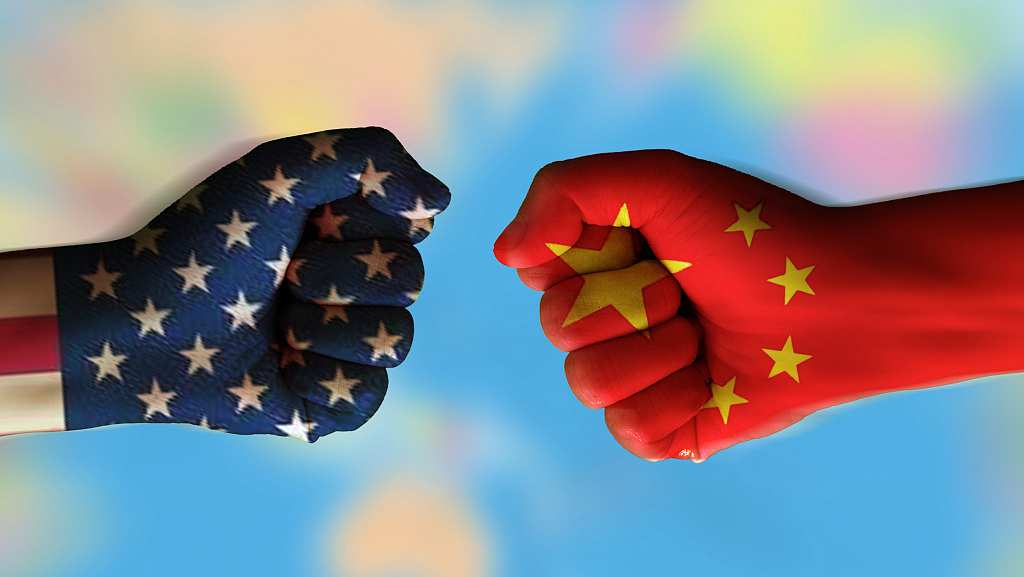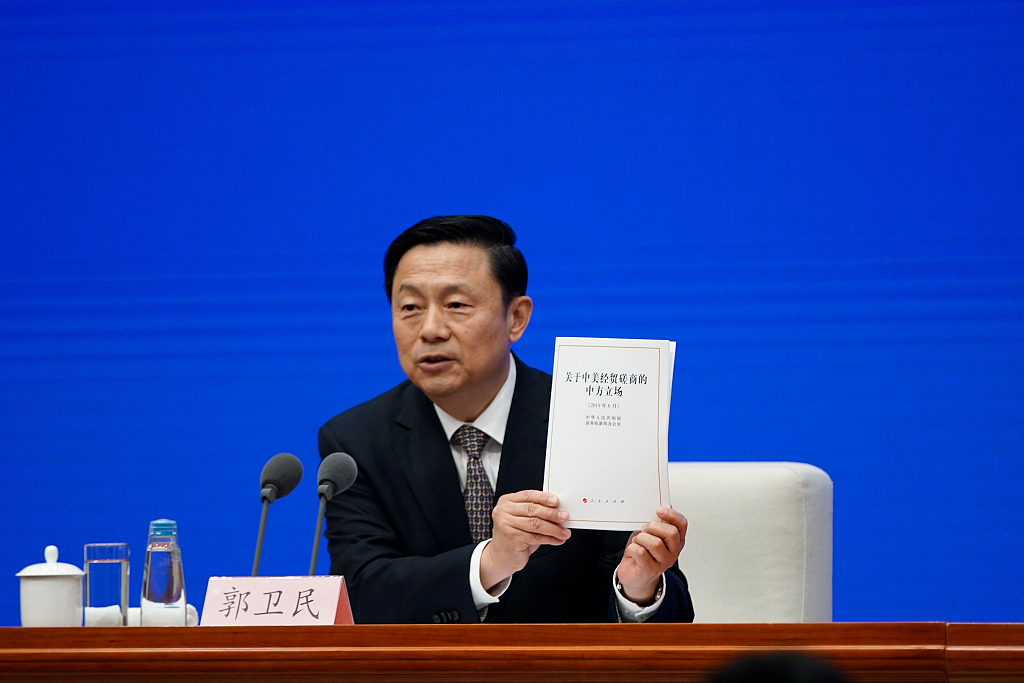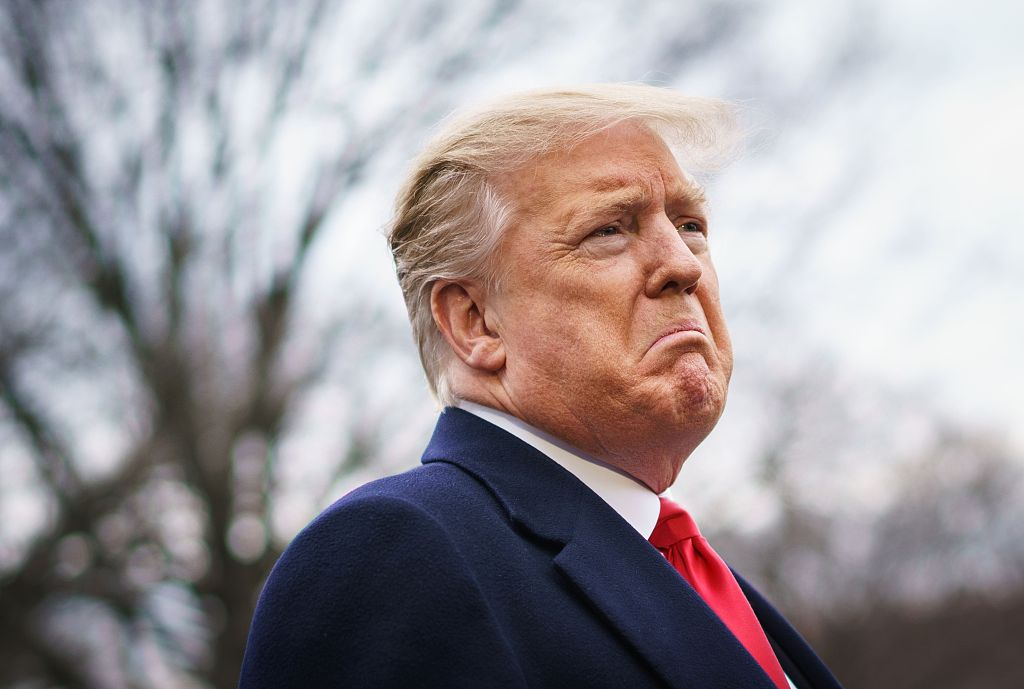

Editor’s note: Chris Hawke, a graduate of the Columbia Graduate School of Journalism, has reported for over two decades from Beijing, New York, the United Nations, Tokyo, Bangkok, Islamabad and Kabul for AP, UPI, and CBS. The article reflects the author's views, and not necessarily those of CGTN.
The U.S. is continuing its drift into a decoupling from China. Hearings start Monday that are a necessary step toward President Donald Trump’s plan to impose tariffs on another 300 billion U.S. dollars’ worth of Chinese goods.
Not too long ago, the world had confidence that China and the United States, although facing challenges, would, in the end, work out their differences because their economies were so closely intertwined. Both sides had too much to lose.
Now, even if a compromise in the current tariff war is reached, both sides will never again be able to trust trade and economic ties are reliable. China, for instance, must urgently develop its own sources for chips and other technology it has been purchasing from the U.S. and its allies.
It is an irony that the U.S., hoping to persuade China to give up its support for high tech industries by imposing sanctions, has instead convinced the Chinese that their approach was necessary — and their national security depends on it. U.S. firms, at the same time, are preparing for the very real possibility that goods imported from China will face crippling additional tariffs.

Guo Weimin, deputy director of the State Council Information Office, introduces the white paper during a press conference on June 2, 2019. /VCG Photo
Apple, for instance, cannot afford to have its iPhones face tariffs at any time, depending on which way the political winds blow. Even if the current trade talks reach a deal, the company must diversify its supply chain.
Trump, of course, was aiming for this all along. He campaigned on revitalizing the manufacturing sector and has called on Apple to assemble its products in the U.S.
Trump has a lot to win by appearing to be tough on China. However, by doing so, he has painted himself into a corner, and won’t make any deal that he cannot sell as a clear win.
Both sides need to be careful not to slide any further into a vortex of self-defeating actions and reactions.
The trade war has already caused pain for both the U.S. and China and threatens to harm the global economy.
There is a way out, however. Since talks with China broke down, Trump threatened to raise tariffs on Mexico if it did not stem the flow of Latin American migrants reaching the U.S. southern border. A deal was reached. China can learn a few things from this incident.
The first is that although the U.S., Mexico and Canada recently negotiated a free trade agreement, this apparently offers no protection from sudden and arbitrary sanctions — in the case of Mexico unrelated to any trade issues.

U.S. President Donald Trump speaks to reporters before boarding Marine One on the South Lawn of the White House in Washington, D.C., U.S., March 22, 2019. /VCG Photo
The second is that Trump appears to have been bluffing. He reportedly backed down from the Mexican standoff without getting anything new. The New York Times reported all the major concessions from Mexico had been previously agreed to. Trump denies this.
Third, the Republican-controlled U.S. Senate essentially revolted on this issue, warning Trump they would not support his sanctions. Up to this point, the Senate has given Trump a free ride, but it seems Trump’s self-destructive gambit was too much for the traditionally pro-business and pro-free trade party.
In recent weeks, the U.S. has seemed to be moving toward a possible war with Iran, and also another completely pointless budget crisis, which this time could lead to the U.S. government default. Both actions seem to have no logical endgame.
There is good news and bad news for China when analyzing Trump’s actions to try and predict what he will do next.
The good news is that he seems to be a bluffer, and has backed down from escalating trade confrontations with Mexico, Canada, Japan and Europe.

Liu He, China's vice premier, left, departs the Office of the U.S. Trade Representative in Washington, D.C., U.S., May 9, 2019. /VCG Photo
The bad news is that he seems to be playing chess by only looking one move ahead. His road-to-nowhere government shutdown most obviously proves this, but more generally, there does not seem to be any significant negotiation he has come out on top of — unless you count averting several crises that he himself started. For example, his threat to tear up NAFTA ended up with a new deal that looks a lot like the old one.
Looking beyond Trump, China should be cautious with its next moves. Trump’s policy toward China is perhaps the only area where candidates for the Democratic presidential nomination agree with him. Sentiment in the United States media, including outlets that consistently criticize President Trump’s policies, is firmly against China. Russia has spoken up to defend China in the current showdown with the U.S., but otherwise, China has few allies in this battle.
Although trust between the U.S. and China has been harmed and the relationship has likely permanently changed, there is still much to be gained from a deal, and much to lose if ties keep unraveling.
The ties between China and the U.S., although weakened, are still profound. Unfortunately, it seems like shared economic interests will no longer have the same anchoring effect they once seemed to, but both countries still need each other and benefit from stable relations.
(If you want to contribute and have specific expertise, please contact us at opinions@cgtn.com.)

Copyright © 2018 CGTN. Beijing ICP prepared NO.16065310-3
Copyright © 2018 CGTN. Beijing ICP prepared NO.16065310-3